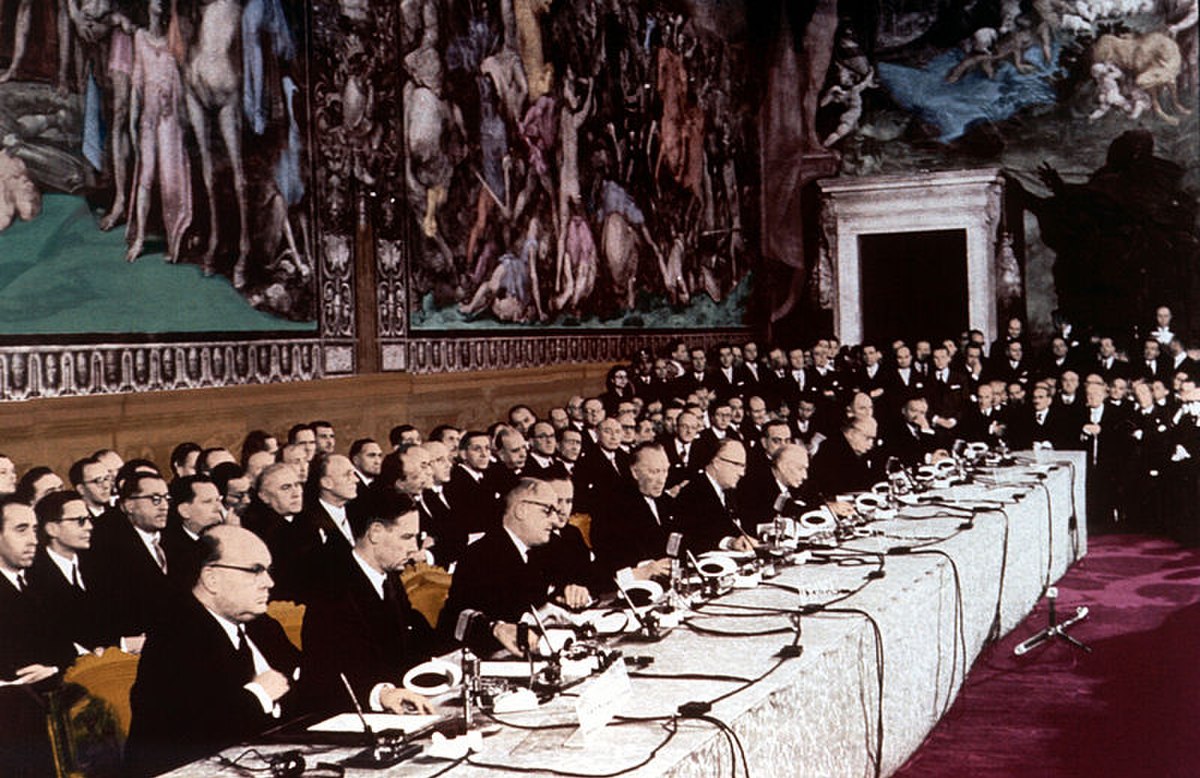
Italy joins Marshall Plan and NATO
ItalyItaly joined the Marshall Plan (ERP) and NATO. By 1950, the economy had largely stabilized and started booming. In 1957, Italy was a founding member of the European Economic Community, which later transformed into the European Union (EU).
The Marshall Plan's long-term legacy was to help modernize Italy's economy. How Italian society built mechanisms to adapt, translate, resist, and domesticate this challenge had a lasting effect on the nation's development over the subsequent decades. After Fascism's failure, the United States offered a vision of modernization that was unprecedented in its power, internationalism, and invitation to emulation. However Stalinism was a powerful political force. The ERP was one of the main ways that this modernization was operationalized. The old prevailing vision of the country's industrial prospects had been rooted in traditional ideas of craftsmanship, frugality and thrift, which stood in contrast to the dynamism seen in automobiles and fashion, anxious to leave behind the protectionism of the Fascist era and take advantage of the opportunities offered by rapidly expanding world trade.
By 1953, industrial production had doubled compared with 1938 and the annual rate of productivity increase was 6.4%, twice the British rate. At Fiat, automobile production per employee quadrupled between 1948 and 1955, the fruit of an intense, Marshall Plan-aided application of American technology (as well as much more intense discipline on the factory-floor). Vittorio Valletta, Fiat's general manager, helped by trade barriers that blocked French and German cars, focused on technological innovations as well as an aggressive export strategy. He successfully bet on serving the more dynamic foreign markets from modern plants built with the help of Marshall Plan funds. From this export base he later sold into a growing domestic market, where Fiat was without serious competition. Fiat managed to remain at the cutting edge of car manufacturing technology, enabling it to expand production, foreign sales, and profits.
